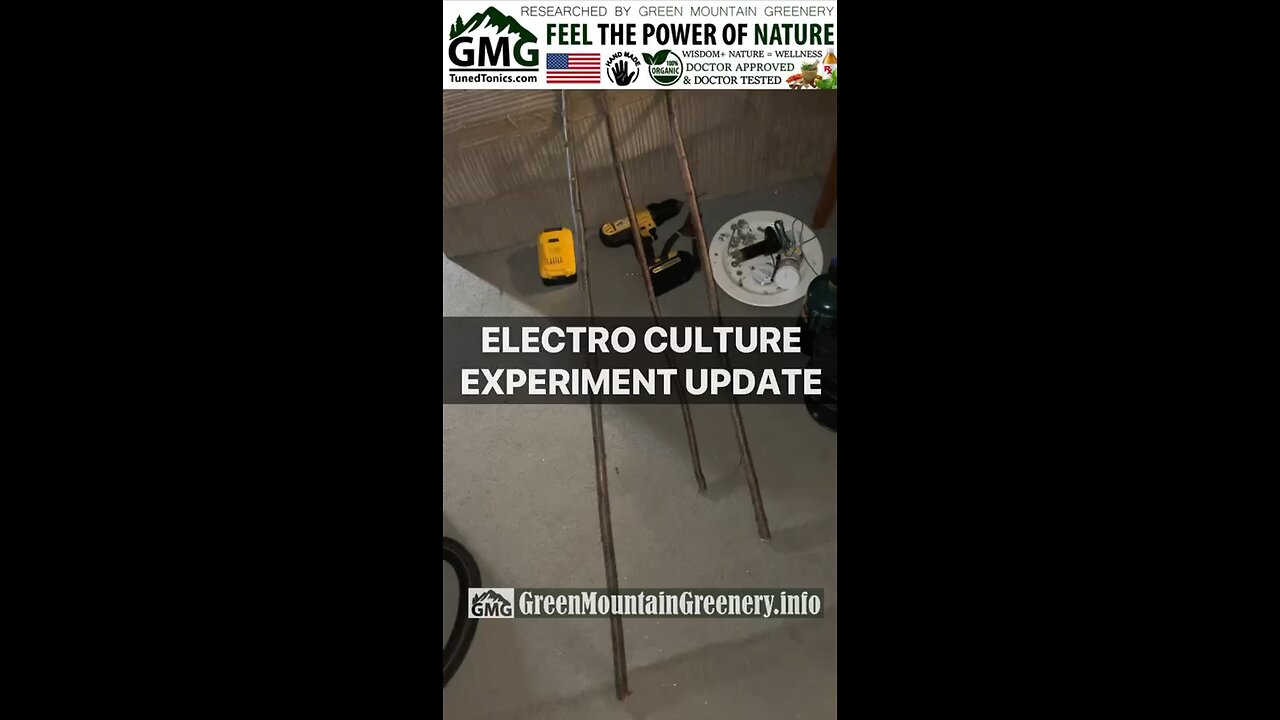Premium Only Content

More Electro Culture Experiments
Electro Culture Experiment Update: Traditional Vortex Style added
Inspired by Viktor Schauberger’s vortex work.
Some background on why we did some of the aspects:
Viktor Schauberger, an Austrian naturalist and inventor, did not specifically focus on or extensively document his views on electroculture. However, his broader insights into natural principles and energies are often referenced by proponents of electroculture. Here are some aspects of Schauberger’s philosophy that may intersect with the principles of electroculture:
Energy Observations: Schauberger had a profound interest in natural energies, including the electromagnetic forces present in nature. He frequently studied how these energies influenced water and plant vitality.
Life Forces: Known for his concept of "life force" or "vitality," Schauberger believed that natural processes and materials could enhance the life-energies in living organisms. This is somewhat analogous to electroculture's aim to use electrical forces to stimulate plant growth.
Biocompatibility: Schauberger’s advocacy for using natural, harmonious materials (like copper and wood) aligns with electroculture’s goal of enhancing natural growth through biocompatible means. Electroculture efforts avoid harmful electric levels that could disrupt biological processes, striving for a similar kind of synergy that Schauberger promoted.
Vortex Water: While not directly related to electroculture, Schauberger’s study of vortex motions in water implies a belief in structured, energetically enriched elements for growth. Electroculture can be seen as structuring the electrical environment around plants, akin to how Schauberger structured water.
Electrostatics: Sharpened metallic or conductive tips can enhance the electric field strength at the pointed end. This could theoretically help in better attracting and distributing atmospheric electric charges around the garden plot.
Ions and Air Electrification: The pointed tip could also ionize the surrounding air more effectively, potentially benefiting the electrochemical processes in the soil and plants.
Follow progress at iKnowNature.com
More
-
 LIVE
LIVE
Alex Zedra
1 hour agoLIVE! DOOM ALL NIGHT
247 watching -
 LIVE
LIVE
Censorfriendly
15 minutes agoWhat up Rumble
58 watching -

Anthony Rogers
1 day agoEpisode 370 - Past and Future Lives
991 -
 LIVE
LIVE
PudgeTV
2 hours ago⭕Gaming on Rumble | Team Scream Stream | R.E.P.O. on Rumble
73 watching -
 LIVE
LIVE
BigTallRedneck
2 hours ago$500 HALO TOURNAMENT PRACTICE
74 watching -
 1:15:00
1:15:00
Sarah Westall
5 hours agoCapturing You in the Matrix – Escaping the Surveillance State, the Real & Digital ID w/ Twila Brase
41.9K4 -
 LIVE
LIVE
SpartakusLIVE
8 hours ago$18,000 WZ Total Frenzy Tournament || #1 Champion returns to DOMINATE yet another COMPETITION
860 watching -
 LIVE
LIVE
HELMETFIRE
1 hour ago🟢More night less reign.. or something! 🟢 RUMBLE TAKEOVER! 🟢
61 watching -
 2:16:57
2:16:57
RiftTV/Slightly Offensive
5 hours agoElon Goes NUCLEAR on President TRUMP.. Is This THE END For Musk? | The Rift | Guest: Viva Frei
48.6K23 -
 1:47:39
1:47:39
Alternatively - Formerly Conspiracy Pilled
5 hours agoWE NEED TO TALK ABOUT ELON AND TRUMP
43.9K23